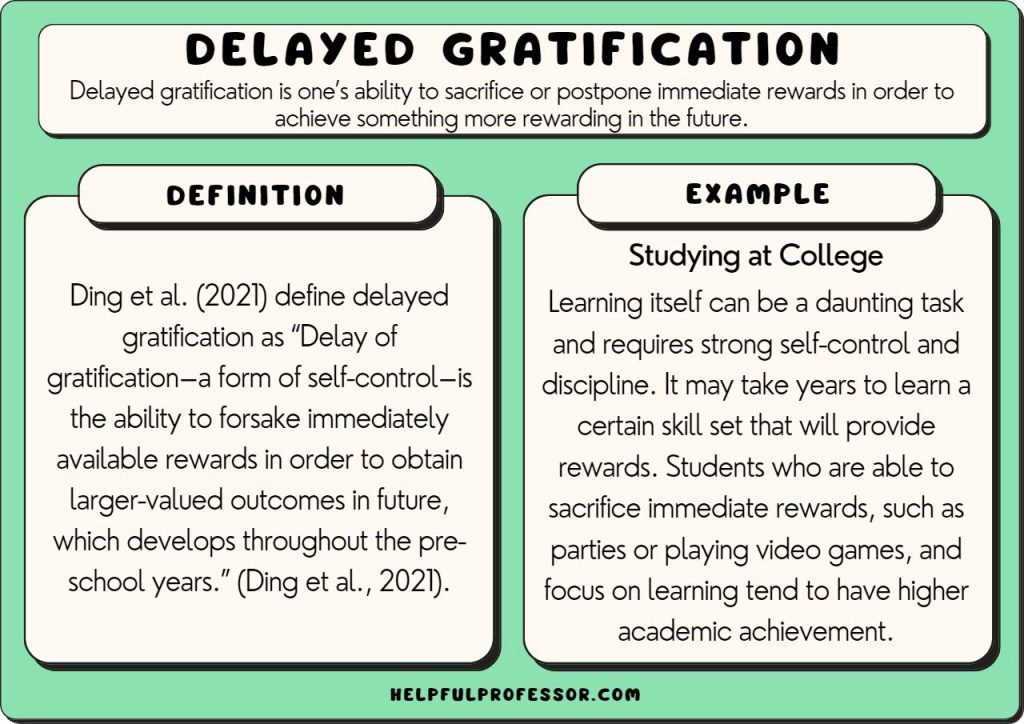
The Superpower of Waiting: The Value of Delayed Gratification for Kids
Imagine your child really, really wants that new toy they saw advertised. Or maybe they just want to eat all the cookies in the jar right now. In a world filled with instant downloads, fast food, and immediate entertainment, teaching kids to wait can feel like an uphill battle. But here’s a secret: learning to wait for something better, to work towards a bigger reward, is one of the most powerful skills you can give them. It’s called delayed gratification, and it’s a superpower for life!
This article will break down what delayed gratification means for kids, why it’s incredibly important for their future success and happiness, and practical ways parents and educators can help children develop this vital skill.
What is Delayed Gratification (for Kids)?
At its simplest, delayed gratification means choosing to wait for a larger, more valuable reward in the future, rather than taking a smaller, immediate reward now. It’s about resisting the urge for instant pleasure and understanding that patience can lead to something even better.
Think of it like this:
-
Instead of: Eating one small piece of candy right away.
-
It’s: Waiting until after dinner to have a bigger, tastier dessert.
-
Instead of: Buying a small, cheap toy with their allowance every week.
-
It’s: Saving their allowance for several weeks to buy that really cool, bigger toy they’ve been dreaming of.
-
Instead of: Playing video games the moment they get home from school.
-
It’s: Doing their homework first so they can enjoy guilt-free playtime later.
The Famous Marshmallow Test:
You might have heard of the "Marshmallow Test." In the 1960s, researchers offered young children a marshmallow. They told the kids that if they could wait a few minutes without eating the first marshmallow, they would get two marshmallows! Some kids ate the first one right away, while others struggled but managed to wait. Decades later, the researchers followed up with these children and found that those who had waited for the second marshmallow generally had better life outcomes – higher SAT scores, better stress management, and even healthier relationships. This classic study perfectly illustrates the long-term benefits of learning to delay gratification.
Why is Delayed Gratification So Important for Kids?
Teaching kids the value of waiting isn’t just about making them more patient (though that’s a nice bonus!). It’s about equipping them with fundamental skills that will serve them in every aspect of their lives.
1. Better Grades and Learning Success
Learning requires effort and patience. A child who can delay gratification is more likely to:
- Focus on homework even when they’re tired or bored.
- Study for tests over several days instead of cramming at the last minute.
- Read challenging books that require sustained attention.
- Understand that practice makes perfect in subjects like math or playing an instrument.
This ability to prioritize long-term academic goals over short-term desires (like playing or watching TV) directly leads to improved understanding, better grades, and a love for learning.
2. Stronger Friendships and Social Skills
Delayed gratification isn’t just about personal goals; it’s crucial for social interactions too. Kids who can wait are better at:
- Taking turns in games or conversations.
- Sharing toys or resources.
- Listening patiently when others are speaking.
- Controlling impulses like interrupting or reacting angrily.
These skills are the building blocks of empathy, cooperation, and healthy relationships, helping children make and keep friends more easily.
3. Reaching Big Goals and Dreams
Every significant achievement in life, from learning to ride a bike to becoming a doctor, requires sustained effort and the ability to delay immediate rewards. For kids, this could mean:
- Saving money for a big toy, a family trip, or even a college fund.
- Practicing a sport or musical instrument consistently to improve skills and perform well.
- Working on a long-term project at school, breaking it down into smaller, manageable steps.
Understanding that small, consistent efforts over time lead to big accomplishments is a powerful lesson for future success.
4. Handling Money Wisely
In an increasingly consumer-driven world, financial literacy starts early. Teaching delayed gratification helps kids understand:
- The concept of saving: Choosing to save allowance for a desired item instead of spending it impulsively on small treats.
- Budgeting: Understanding that money is finite and requires choices.
- Avoiding debt: As they get older, this skill helps them resist the urge to buy things they can’t afford immediately.
These early lessons in financial patience can set them up for a lifetime of smart money management.
5. Becoming Happier and Healthier
Believe it or not, delayed gratification plays a role in well-being too:
- Healthy Eating: Choosing fruits and vegetables now for long-term health benefits, instead of only sugary snacks.
- Exercise: Sticking to a routine even when they’d rather relax, knowing it builds strength and fitness.
- Emotional Regulation: Learning to manage frustration or anger instead of lashing out, leading to more peaceful interactions and a calmer inner state.
Kids who can regulate their impulses tend to be less prone to meltdowns and more capable of finding healthy ways to cope with challenges.
6. Building Resilience and Problem-Solving Skills
Life is full of setbacks. Kids who can delay gratification are often more resilient because they understand that:
- Effort pays off: If something is hard now, continued effort can lead to success later.
- Problems can be solved: They are more likely to persist in finding solutions rather than giving up when faced with a challenge.
- Frustration is temporary: They learn to sit with discomfort, knowing a positive outcome is on the horizon.
This ability to "stick with it" is invaluable for navigating the ups and downs of life.
How Can Parents and Teachers Help Kids Develop Delayed Gratification?
It’s clear that this is a vital skill, but how do you teach it? It’s not about making kids wait unnecessarily or frustrating them. It’s about providing opportunities and guidance.
1. Start Small and Simple
Don’t expect your child to save for a car when they’re five. Begin with small, manageable waiting periods and simple rewards.
- "Wait 5 minutes for dessert." (Use a timer!)
- "You can watch that show after you put your toys away."
- "We’ll get a treat when we finish our errands."
2. Talk About It: Connect Actions to Rewards
Help your child understand the "why" behind the waiting.
- "If you finish your chores now, we’ll have more time to play at the park later."
- "Practicing your piano for 15 minutes every day will help you play that song you love much faster."
- "If we save our money from the grocery store, we can buy a bigger, better ice cream next week."
3. Use Visuals and Timers
Young children benefit greatly from seeing time pass or progress being made.
- Visual timers: An hourglass or a timer with a disappearing color bar.
- Sticker charts or chore charts: Showing progress towards a goal.
- Savings jars: Clearly labeled jars for different savings goals.
4. Set Clear Expectations
Be consistent and clear about what needs to happen before the reward.
- "First, we do X, then we get Y." (e.g., "First, brush your teeth, then story time.")
- "When you finish all your vegetables, you can have a cookie."
- "You can have screen time once your homework is completely done and checked."
5. Model the Behavior
Children learn by watching. Show them that you also practice delayed gratification.
- "Mommy is saving money for a new couch instead of buying small things right now."
- "Daddy is exercising every day to be healthy for a long time."
- "I’m finishing my work now so we can have a relaxing weekend together."
6. Offer Choices (When Appropriate)
Giving children a sense of control can make waiting easier.
- "Do you want to clean your room now and play later, or play for 10 minutes and then clean?"
- "Would you rather have a small treat now, or save up for a bigger one on the weekend?"
7. Celebrate Small Wins
Acknowledge and praise their efforts when they successfully delay gratification.
- "I noticed you waited patiently for your turn – great job!"
- "You saved up for that toy! I’m so proud of how patient you were!"
- "You really focused on your homework, and now you have so much free time!"
8. Turn Waiting into Learning or Fun
Sometimes, the waiting period can be productive or enjoyable.
- "While we wait for the doctor, let’s read this book."
- "While dinner is cooking, let’s play a quick board game."
- "Let’s make a drawing about what we’ll do when we get to the park."
Common Challenges and How to Overcome Them
- Frustration/Meltdowns: Acknowledge their feelings ("I know it’s hard to wait, you really want that now!"). Remind them of the bigger reward. Offer a distraction or a comfort item if needed.
- Giving Up: Break the goal into even smaller steps. Reiterate the "why" and the benefits. "You’re so close! Remember how much fun you’ll have when you get that new bike?"
- Impulsivity: Practice, practice, practice. Start with very short waiting periods and gradually increase them. Use timers.
Conclusion
Delayed gratification is more than just a skill; it’s a mindset. It teaches children that hard work, patience, and thoughtful choices lead to greater rewards and a more fulfilling life. It’s the foundation for academic success, healthy relationships, financial wisdom, and overall well-being.
By starting small, modeling the behavior, and consistently guiding them, parents and educators can help children unlock this incredible superpower of waiting. It might not happen overnight, but the long-term benefits for your child’s future are truly priceless. So, let’s empower our kids to embrace the superpower of waiting, knowing that the best things in life are often worth waiting for!




Post Comment